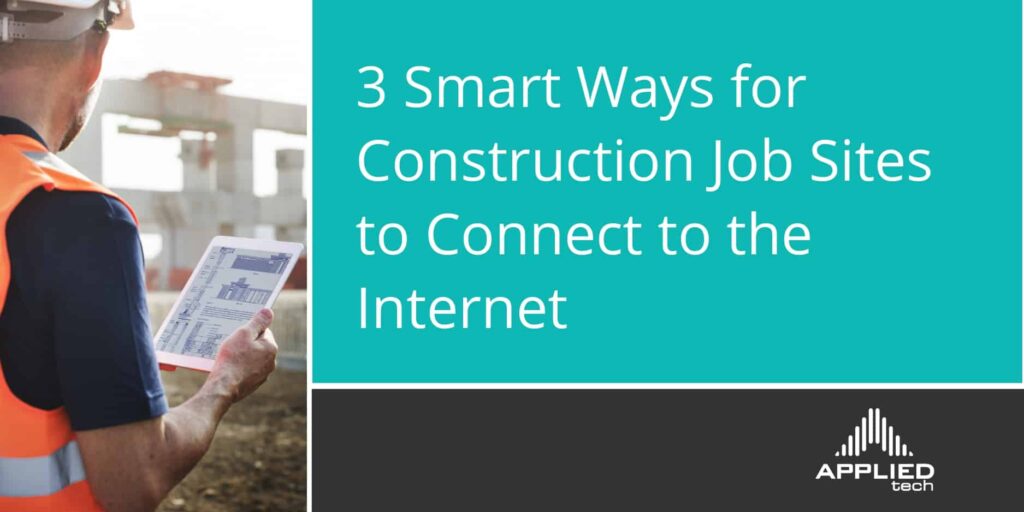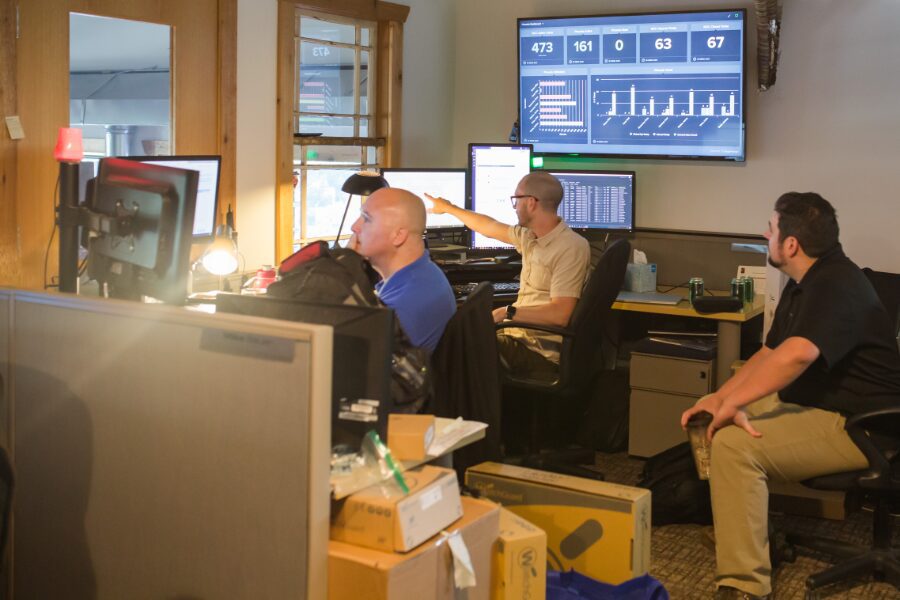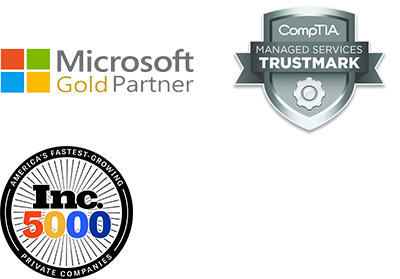Software and mobile devices are making the construction industry more efficient. Apps have streamlined the QA process and instead of printing out a 20-pound roll of drawings, you can view the complete set on a tablet. But there is one catch – you need a reliable, secure internet connection.
A standard internet connection is ideal at a job site but not always possible. For short-term projects, or as a stopgap while you wait for traditional services, 4G and Point-to-Point solutions can keep your job site connected.
Connect to the Internet on a construction job site – standard service
Hands down, a standard internet service offers the most reliable connection. But the barriers can be high, especially for new buildings. By the time you establish an address and phone line, the project could be nearing completion.
Traditional service
- Pro: Most reliable option
- Con: High barriers, especially for new buildings.
- Con: Takes time to set up
Using AirCards to connect to 4G Cellular Service on a job site
Using an AirCard, you can connect a device to 4G the same way your cell phone accesses the network and shared resources like printers. The connection quality depends on the reliability of cellular coverage at the job site. Once the AirCard is plugged into a USB port, your devices can access the internet. Or, you can combine the power of multiple AirCards using special routers to create a stronger connection. Without a compatible router, each user will need their own AirCard which can become costly.
AirCards
- Pro: Available in most areas
- Pro: With a router, can access shared resources
- Con: Unreliable connections are possible
- Con: Monthly access fees for individual AirCards quickly add up
Using point-to-point wireless on a construction site
Point-to-point wireless creates a long range directional wireless access point. The equipment you need resembles a TV satellite dish. You mount the device to the trailer or a pole on the roof, ensuring it has a direct line of site to the provider’s antenna. If you have a good connection, it can be the equivalent of running fiber optic.
Point-to-Point Wireless
- Pro: Faster and more stable than 4G-based options
- Pro: Can be used in a construction trailer without telecom facilities and with temporary generator power
- Con: Limited accessibility
- Con: Buildings and trees will block the signal (clear line-of-sight to base station is needed).
- Con: Signal can be affected by heavy rain
4 Tips to Keep Your Job Site Internet Connection Secure
Connecting is only half the battle. Your job site needs to stay secure too. The following tips will keep your information safe and satisfy compliance requirements.
1. Conduct a Risk Assessment
Each job site presents different challenges, and an assessment uncovers all your security exposures. At a minimum, you should have these 7 areas covered:
- The internet connection is private to you and your team
- You don’t allow outside companies on your internal network
- Your employees are using multifactor authentication
- All laptops are encrypted
- You use mobile device management (MDM) to track and control devices
- You can remote-wipe devices that disappear
- Your key employees know where exposure points are
A security risk assessment is a good starting point for any construction project. It will help you answer the questions above, prioritize action items, and meet compliance and confidentiality requirements.
2. Segment Your Network to Mitigate External Threats
If you plan on sharing your connection with other contractors and external partners, segment your network. Everyone will access the same internet connection, but external partners won’t be able to view your organization’s internal documents. You’ll reduce compliance risk and prevent malware and threats spreading from one organization to another.
3. Provide Security Awareness Training
In any industry, employees present the biggest IT security risk – especially when they carry devices with company data that can be lost or stolen. Regular security awareness training on the latest tactics and what to look out for helps create a more secure operating environment.
4. Implement Standard Security Policies
You want to have systems in place before an attack occurs. Follow best practices, like encrypting hard drives and using multifactor authentication to prevent hacks and phishing attacks. Then, set up mobile device management so you can wipe data off lost or stolen devices.
IT Consulting for Construction
Applied Tech provides strategic IT services to Wisconsin Architecture, Engineering and Construction (AEC) companies. We’ll start with a security risk assessment to pinpoint your security exposure points. Then, drawing on our previous experiences working with the AEC sector, we can help you configure your network, train employees on the latest threats, and implement standard best practices like mobile device management.
Contact Applied Tech today to see how we can help you create secure, reliable internet connections at job sites.





